Video game consoles aren’t just for gaming. They also make great set-top boxes that stream video and music into our living rooms, and the upcoming Xbox One and PlayStation 4 are no different. Each console brings a little something different to the table, so let’s take a look at how those new consoles will bring entertainment other than video games to your living room.
Photos by Nebulous81 and Simon Wüllhorst
While many of the announcements thus far for the next generation of consoles have focused on games, hardware, development, and all the stuff that video game enthusiasts love, we haven’t seen as much discussion of how well each console would perform as a media centre. Let’s see what the PlayStation 4, the Xbox One and — even though it’s already available — the Wii U offer in the home theatre department.
The Xbox One
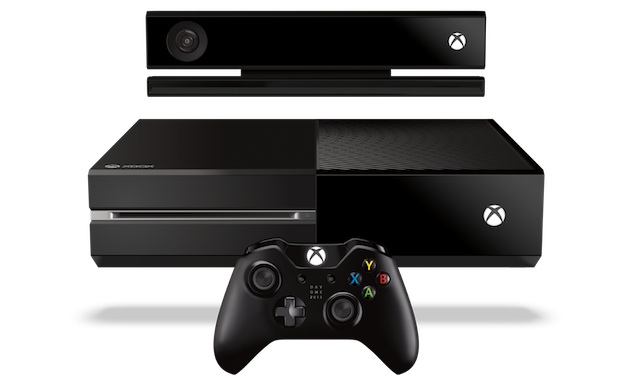
When Microsoft unveiled the Xbox One back in May, most of the announcement event was spent discussing the console’s entertainment features. The word “television” was thrown around a lot, which was understandably aggravating to gamers, but to anyone who uses the Xbox 360 as a set-top box and is thinking about an upgrade, it was potentially useful data. Here’s some of the big talking points we got from that event (and from E3):
- The Xbox One is designed to be a media centre, not just a game console. There’s no question about this. How well it perform in this field remains to be seen, but it’s clear that Microsoft wants this device to be a complete home entertainment system, offering everything from interactive games to streaming movies and music to your physical media collection. Hence the catchphrase “all in one.”
- It will be a region-free Blu-ray player. Your music, DVD and Blu-ray collection will work just fine in the Xbox One. While the console was originally going to be region-locked, Microsoft’s about-face on the Xbox One’s DRM removed its region-restrictions, so you’ll be able to play Blu-rays and DVDs from anywhere in the world on it without hassle.
- The new Kinect brings voice and gesture control to your home theatre. Whether you actually want this is up to you. Waving your hands to switch channels or telling your Xbox to increase the volume can come off cool and futuristic, or it could be a colossal waste of time. For an example of voice or gesture control already in action, AllThingsD points to Samsung’s Smart TV line — which are great sets, but the futuristic control options have suffered from poor adoption.
- The Xbox One plays up SmartGlass (and second screening) in a big way. If you don’t already use your phone when you watch TV as a second screen, Microsoft is hoping you will with the Xbox One. The company is pushing Xbox SmartGlass with the new console, which lets you use your phone or tablet as a remote, looks up maps and character bios for the show you’re watching, and connects you with other fans.
- It will offer HDMI pass-through for a seamless TV-watching experience. Ideally, you’ll connect your set-top box to your Xbox One, and then connect the Xbox One to your TV. At the launch event, we saw some of the features the can be be enabled using HDMI pass-through, such as the option to pause live TV, custom channel guides, and the option to build a personal guide of pinned shows that you enjoy.
- …But none of this is official for Australia yet. Everything Microsoft discussed at the Xbox One launch was connected to US TV and Internet services. We’re not saying that a partnership with Foxtel will never happen — after all, there’s already a Foxtel option for the Xbox 360 — but nothing has been announced yet. TV integration has to be seen as a useful potential future option, not a reason to sign up on day one.
- You’ll Need Xbox Live Gold for streaming. When it does happpen, there’s still the nitpick that in order to use any streaming service, you’ll need an Xbox Gold subscription, and that’s a bitter pill to swallow, especially if if all you’re looking for is streaming media and home theatre capabilities. Granted, Microsoft has updated the program to include some free games, but from a home theatre angle, it’s not a big help. The Xbox One is designed to either replace your Xbox 360 or fit snugly into your home theatre — despite its promises of being “all in one,” it’s not really going to replace anything you already own.
So the overall verdict on the Xbox One is a mixed bag, and a huge question mark for Australians. As well as the lack of local partnerships, we don’t know how the Xbox One will handle Windows Media centre devices, or whether it will function as a media extender. It’s almost certain that the Xbox One will be a DLNA-compatible device, so our favourite streaming media servers and apps such as Skifta or Twonky should work with it. We haven’t heard anything about media sharing or streaming across devices on your home network yet, or whether the Xbox One will play nicely with downloaded media on a networked computer or NAS, but it would be unusual for Microsoft to take features available in the Xbox 360 and remove them from the Xbox One.
The PlayStation 4
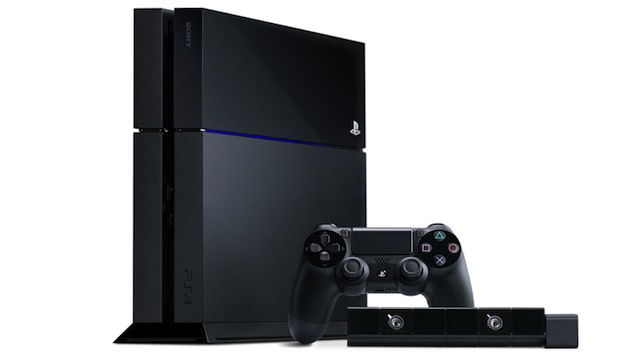
Sony didn’t put as much focus on television and movies when it unveiled the PlayStation 4. What it did say, however, was that you’re not going to get much more for your home theatre out of the PlayStation 4 than you may already have in a PlayStation 3. That’s not necessarily a bad thing.
While there’s something to be said for going out on a limb and trying something different, Sony’s approach is to give you more powerful hardware that does more of what you know and love. It’s true from a gaming perspective, but it’s also true from a home entertainment standpoint. Here are some of the new features Sony did announce:
- The PlayStation 4 is a game console, through and through. It’s not trying to be something it’s not. “Gamer focused” is the way Sony put it during the launch. While you shouldn’t throw up your hands and assume it will be useless as part of your home theatre, be ready: this list is going to be somewhat shorter than Microsoft’s. Sony’s focus is on getting great video games to you, and that interactive gaming experience is the top priority. However, they did dedicate a few moments to television and movies.
- It will be a region-unlocked Blu-ray player. The PS4 will be region free, meaning you’ll be able to play Blu-rays and DVDs from anywhere in the world on the device without issue.
- The PS4 will launch with Sony’s Music Unlimited and Video Unlimited services built-in. This isn’t much of a surprise, but Sony Music Unlimited a subscription music service with over 20 million songs and access via iOS, Android, web, PS3 and now the PS4, will be available to subscribers on day one. Sony’s Video Unlimited will also launch with the PS4, offering over 150,000 Sony Entertainment TV shows and movies available to rent or purchase in SD or HD.
- Sony’s “original programming plan” will bring gamer-oriented music, movies and TV shows to your PS4. This includes movies such as Gamer and Doom, delivered to the PS4 in the form of special programming packages. Yo dawg, I heard you’re a gamer so I put games in your TV and movies so you can watch stuff about games on your gaming console while you’re not gaming.
- The PS4 will support 4K video output. Sony is making a play for 4K television, the next super-resolution video format beyond 1080p. Sony already has 4K TV sets on the market, and sells 4K cameras to movie and TV producers, so it makes sense 4K is supported in the PS4.
That’s about all we heard during the presser. That’s not the end of the story though. As with the Xbox One, it’s a safe assumption that Sony will make the PS4 at least as media friendly as the PS3 already is. That means ideally it will be DLNA-compliant, you’ll be able to stream from external sources (and with luck, the PS3 Media Server will be updated to support the PS4), and external media servers that play nicely with DLNA devices will play nicely with the PS4 as well. Granted, none of this is specifically new or awesome, and if you already have a PS3 as the heart of your home theatre, it might be a tough sell to upgrade if you don’t use your console for gaming. Even so, it would be unusual for Sony — especially given its pro-user, “consumer trust” stance at E3 — to take away features that you can already get in the PS3.
The Wii U
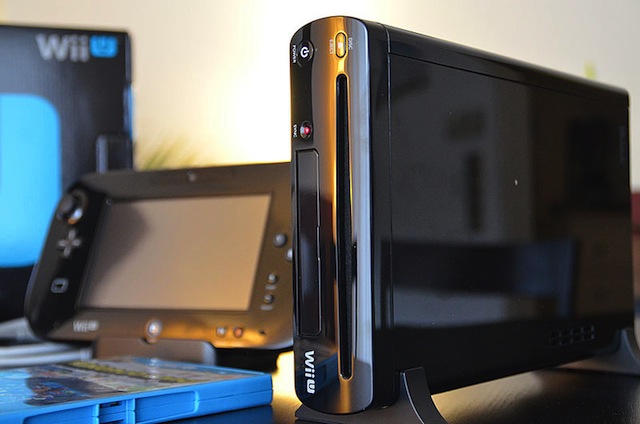
The Wii U has been out since last year, but it still counts as a “next gen console” for the purposes of our roundup. The Wii U is very definitely a gaming device. It — like the Wii before it — isn’t really a home theatre system, and Nintendo has never angled it as such. The Wii U packs full 1080p HD video. However, the Wii U can’t play DVDs, it can’t play Blu-Ray discs, and it can’t play audio CDs. Nintendo doesn’t really offer streaming video content of its own, or any streaming video channels or services that roll into the Wii U aside from the external ones that we’ve mentioned, either.
That’s the bottom line: The Wii U is a game console, and doesn’t even try to be a multimedia device.
An Unlikely Set Of Set-Top Replacements
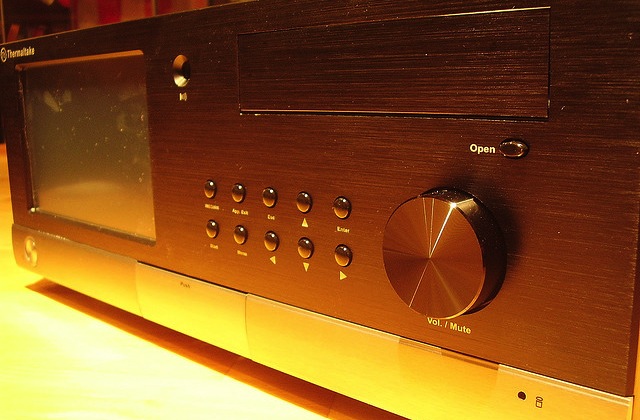
Ultimately, if you’re the type who already has an HTPC that you love, will any of the next generation of consoles replace it? Probably not. The Xbox One is the only console of the three that takes a stab at trying to edge in on the media centre space, but it does it in such a half-in/half-out manner that it’s only going to be really useful to a specific group of people. The PS4 will bring some streaming content that, if you’re interested, may make for an additional service to sign up for. The Wii U really doesn’t even count here. None of those things are bad — it just means that even as game consoles are adding features that make them more like media centres, it’s definitely not their focus yet.
There’s still a wide open place in your home theatre setup for a small PC running XBMC, Plex, Windows Media Center, or whatever front-end you choose, mostly because you can tweak and customise it, and pack in as many features as you want. Want to record live TV as it airs? Install a TV tuner card and a nice big hard drive, and you’re good to go. Want to stream your media to your phone, or to another room, or even to an Xbox or PS3 or an Apple TV? Sure, there are ways to do that. Want to play DVDs, Blu-rays and streaming services while you download TV shows to watch later? An HTPC is your best option, and none of the current generation of consoles — or the coming generation — looks to change that.
Additional reporting by Angus Kidman.
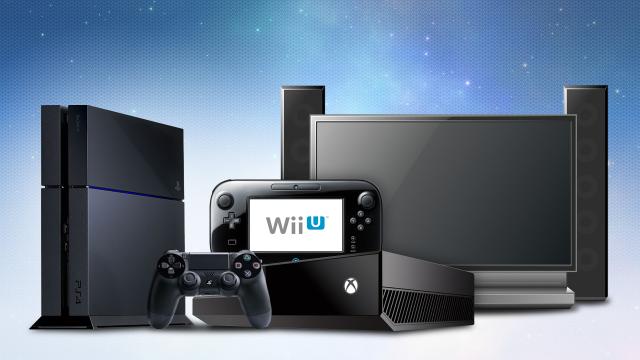
Comments
22 responses to “What The Next Generation Of Consoles Means For Your Home Theatre”
PS4 doesn’t seem to offer much new in the way of added multimedia features, which is pretty disappointing. The Xbox looks pretty attractive for an all in one device. Plus 360 had some amazing games this gen.
What’s wrong with just using the box your tv provider gives you? It has all the features you need, it’s not that hard to hit the source button on the TV remote to change inputs.
The screen quality of my TV is fantastic so I’m not looking to replace it before OLED and 4k TV’s are affordable, but the menu is slow as crap. I’d rather a dumb TV than any rubbish smart TV, but I’d rather never change inputs never again.
Do things work differently in Aus? Here in NZ all HDTV set-top boxes have their own OS with guides and layouts and recording features. The TV you plug it into doesn’t make a difference, it’s just another HDMI cable.
switching HDMI inputs is the issue, incase you missed that. The menu to do it is pretty slow, and attempting to do it without the menu just gets you on the wrong input slowly.
region free bluray & dvd? is that confirmed? from all I’ve heard it was only the games that are region free (just like the PS3)
A TV tuner with programmable recording capability would have been a selling point for me because I don’t do cable.
I’ve got a current gen Kinect and even when it works well (which is rare) I don’t find waving my hands or speaking a more efficient way of navigating menus/channels than pressing a button.
Um i think there is some mis information or at least unverified stuff here.
Regarding no region locking (unless they have stated elsewhere), i believe It refers only to games and not dvd’s or blurays.
Like how the Ps3 currently is. It can play games from all regions but is still locked for bluray movies and dvds to whichever region you bought it in.
I would be nice if you contacted the appropriate people and asked if the region free is games only or not as I would loved to be proven wrong as I would like nothing more than my Ps4 and Xbox one to both be region free in all aspects.
Question is, will the PS4 have a PlayTV option like the PS3 or will it support the PS3’s PlayTV?
Considering I have to run the old PlayTV software as the latest makes the PS3 slim reboot when you quit it, I wouldn’t be terribly excited considering Sony don’t update it or fix bugs ever. Worked great when I had a fat PS3 before it died.
Probably worth mentioning that the WiiU is the only one that is useful if you feel like gaming while the wife is watching something on your shiny TV.
Nope, PS3 & (PSP or Vita) or PS4 & Vita work just the same.
Looks like Xbone will have the option to play 4K games as well as videos
http://www.cnet.com.au/xbox-one-supports-4k-and-3d-339344403.htm
I don’t think we’ll ever see a truly integrated console that will slip seamlessly into out home entertainment as the “hub”. Each manufacturer has its own ideas. I imagine Sony would be the best bet to provide this as they do make great home entertainment products but why would they cut into their own market like that?
My understanding is that there is no such animal as a region-free Blu-Ray player, as Blu-Ray has no equivalent of the DVD “Region zero” which allows material to be played from any region.
Some Blu-Ray players do allow you to swap between region codes freely. However, I would be cautious in expecting either the XBone or PS4 to do this, given that current-gen consoles are region locked for DVDs & Blu-Ray.
Bluray can do region free the same way DVD did, The player just ignores the region code. With the first DVD player (one of those dvd vhs combos) I got, I asked the shop to install the region free chip into it and they did. Done.
The Xbox One also supports 4k output for video AND games. PS4 supports 4K for video ONLY.
So that is not exactly a positive or advantage for PS4 and may in fact be a negative compared to the Xbox One. You guys need to do your research. Also…no mention of Xbox Music/Video services which offer larger libraries than Sony’s alternatives. Xbox Music’s library is also larger than Spotify/Rdios which is a pretty big advantage….and yet it’s ignored.
Doesn’t look like 4K gaming will be realistically happening on the Xbone either though – http://m.cnet.com.au/why-next-gen-consoles-wont-run-games-at-4k-339344774.htm
So value for money wise I should go the xbox one? or stick with mediaportal and the wii U?
I think in either case you will face the same issues as ‘Media Center’ on PC. Crappy restricted ports of existing apps and limited ‘behind the times’ support for codecs etc.
Guy’s, even though Xbox supports 4k for games also do you REALLY think they will be running at that res? Come on honestly? The games will run like SHIT, remember games = a LOT LOT LOT more stressful to a system than a Movie, also (besides the previous fact which makes it stupid and just bragging rights) NO game manufacturers are making games for that res and I highly doubt they will unless they want to make draw distance etc next to zero and make other things suffer just to brag on the rights of making it 4k. It would be really nice if they did but I just don’t see it happening.
Also PS4 CAN do it (just hasn’t been mentioned like Xbox one didn’t at first either) ps4 can
but it’ll be rare, its about ram and processing of pixels, lots of processing on the screen means upscaling (fake like halo 3 720p was) or less happening to support more pixel pushing
but both have the ram to support it for either.
Rather 1080p uberness than 4k less uberness.
Oh PS I just found an article saying exactly what I just said anyhow.
http://www.cnet.com.au/why-next-gen-consoles-wont-run-games-at-4k-339344774.htm
Sony also just announced that their 4K Video Unlimited will launch this year, I think it was with the launch of their first 4k player.
But currently the Video Unlimited service is not available to AU users, and I’m doubtful that’s going to change. Has it been announced that they’re expanding territories?
Here’s another interesting take on next gen gaming consoles taking over as your media-hub-master at home:
http://www.buckscoop.com.au/bargain-blog/can-a-gaming-console-be-your-media-hub/